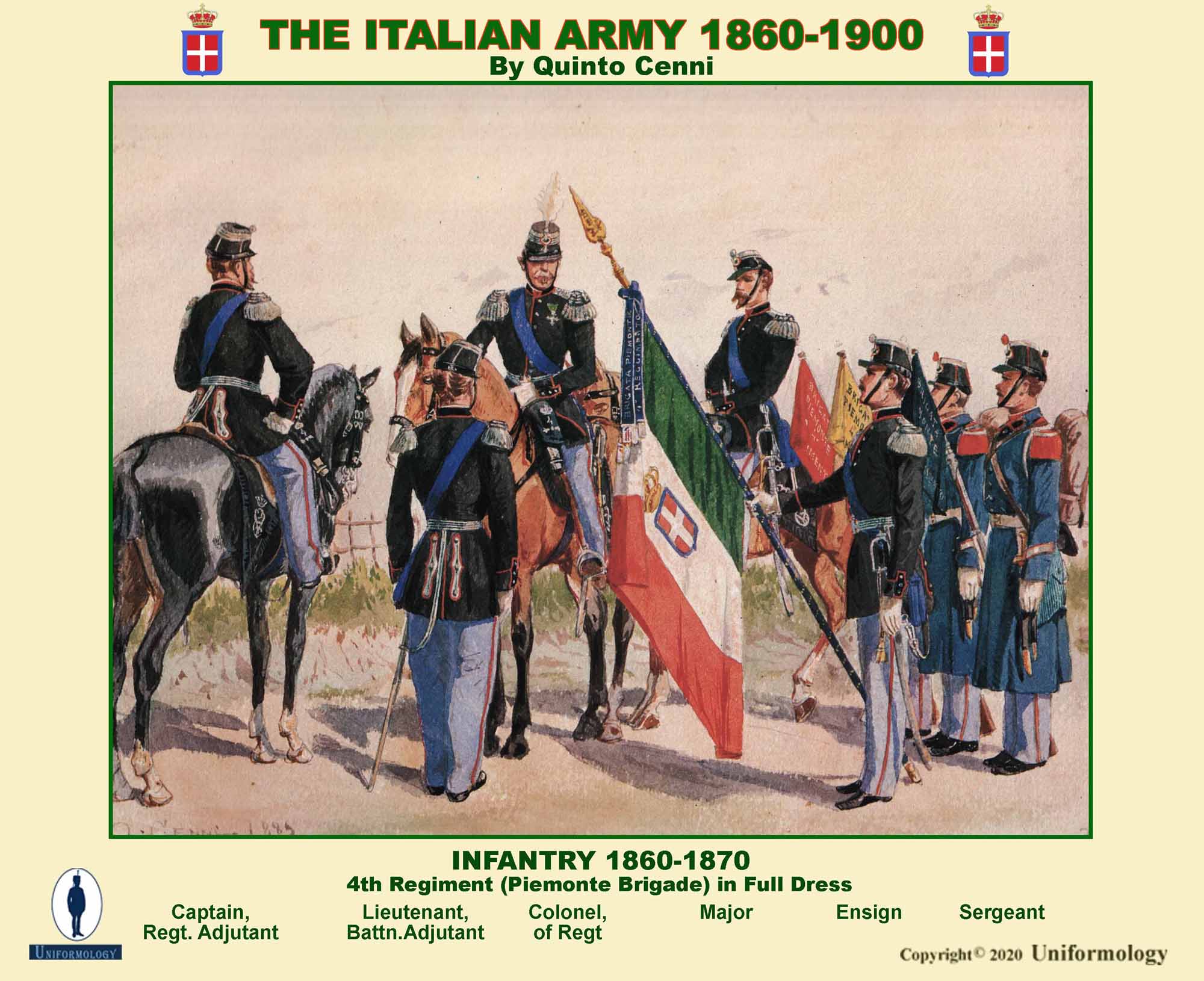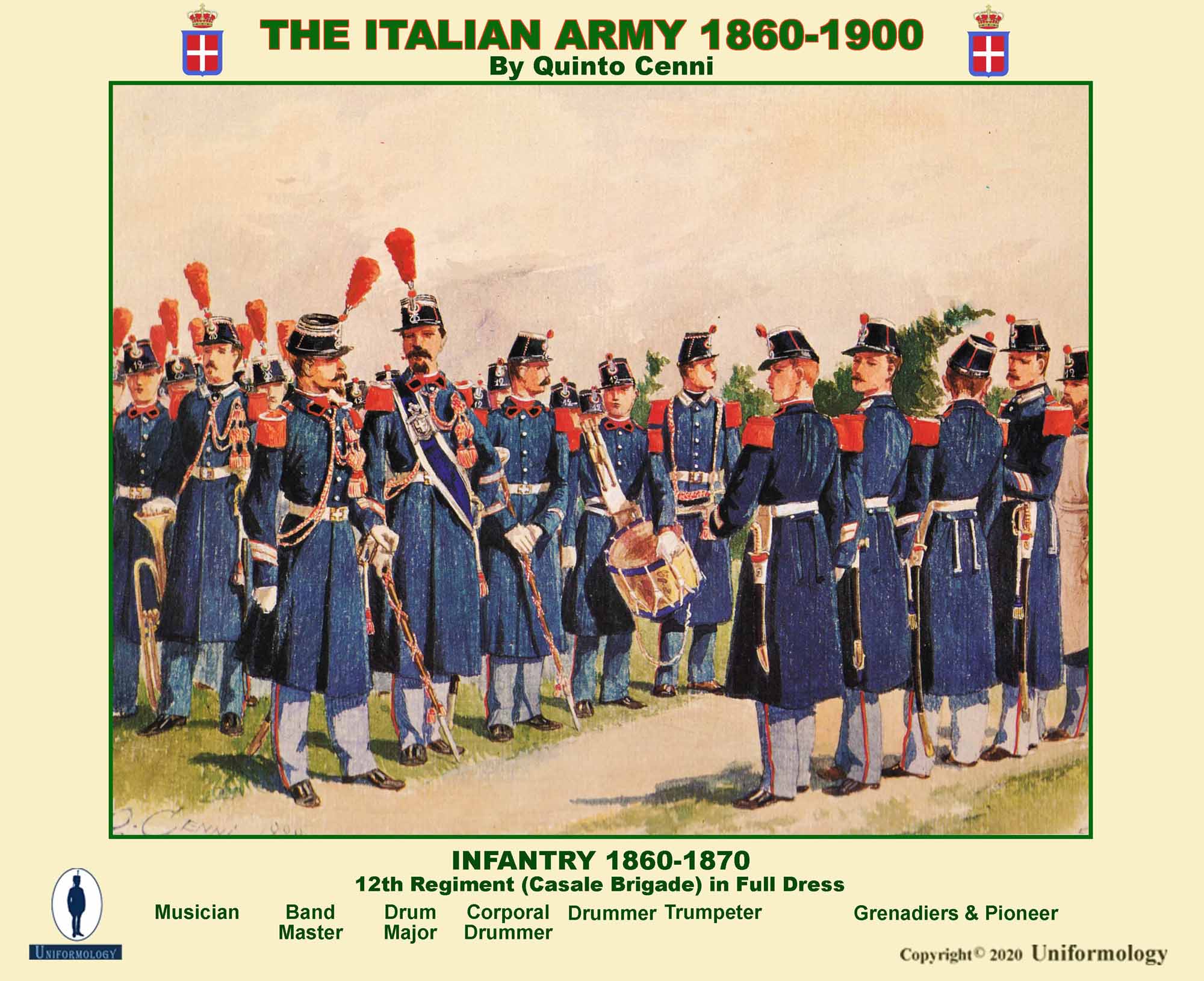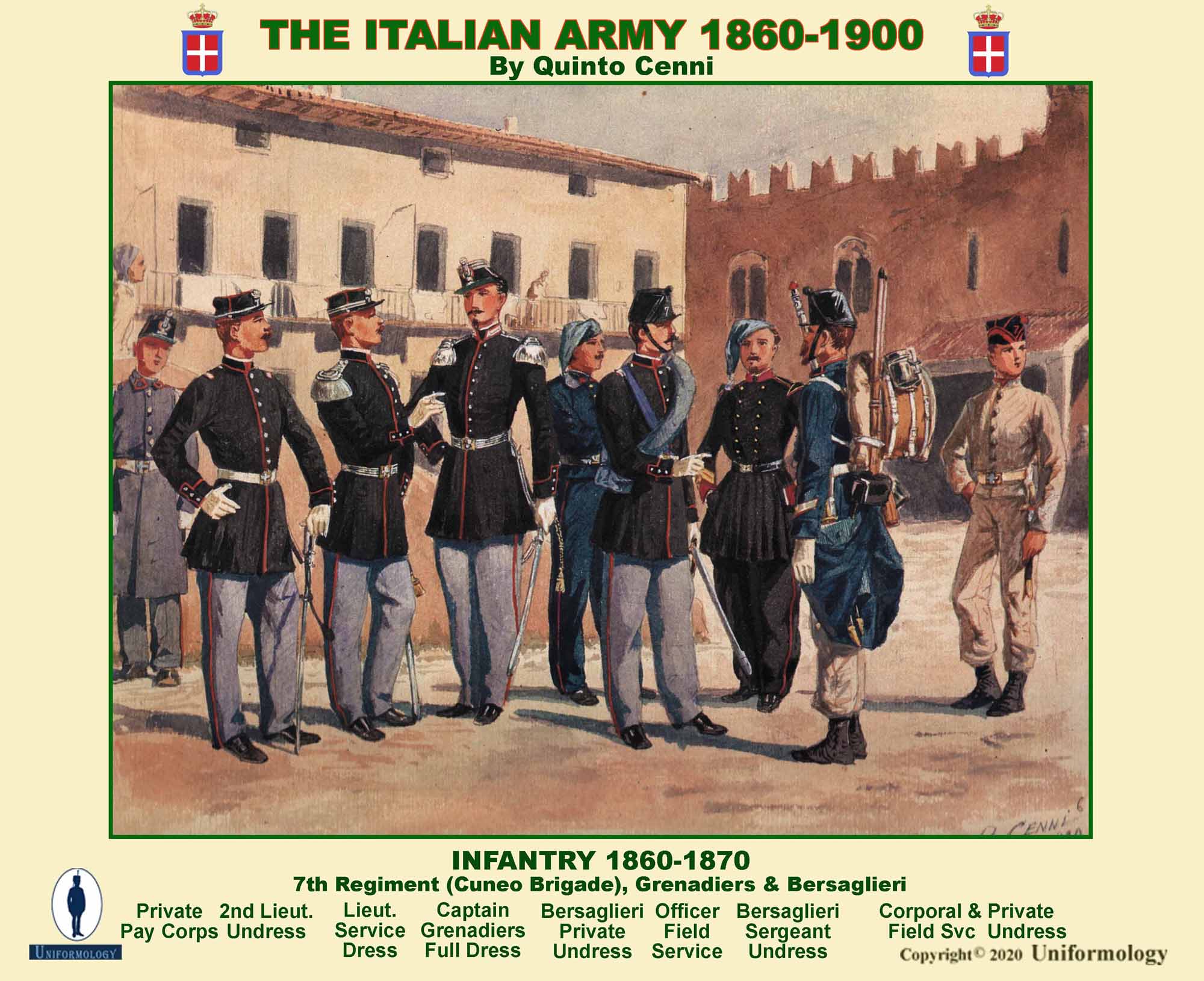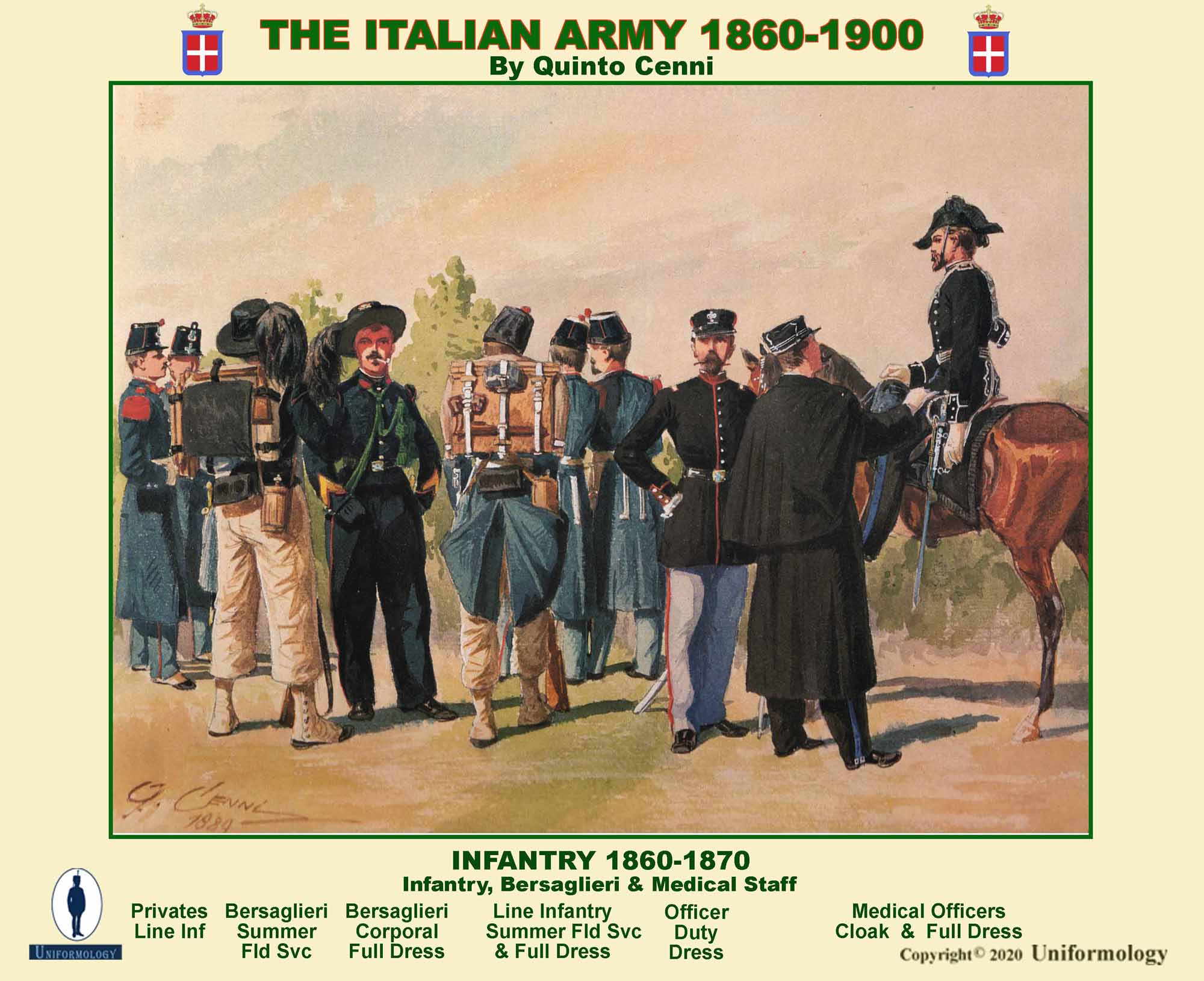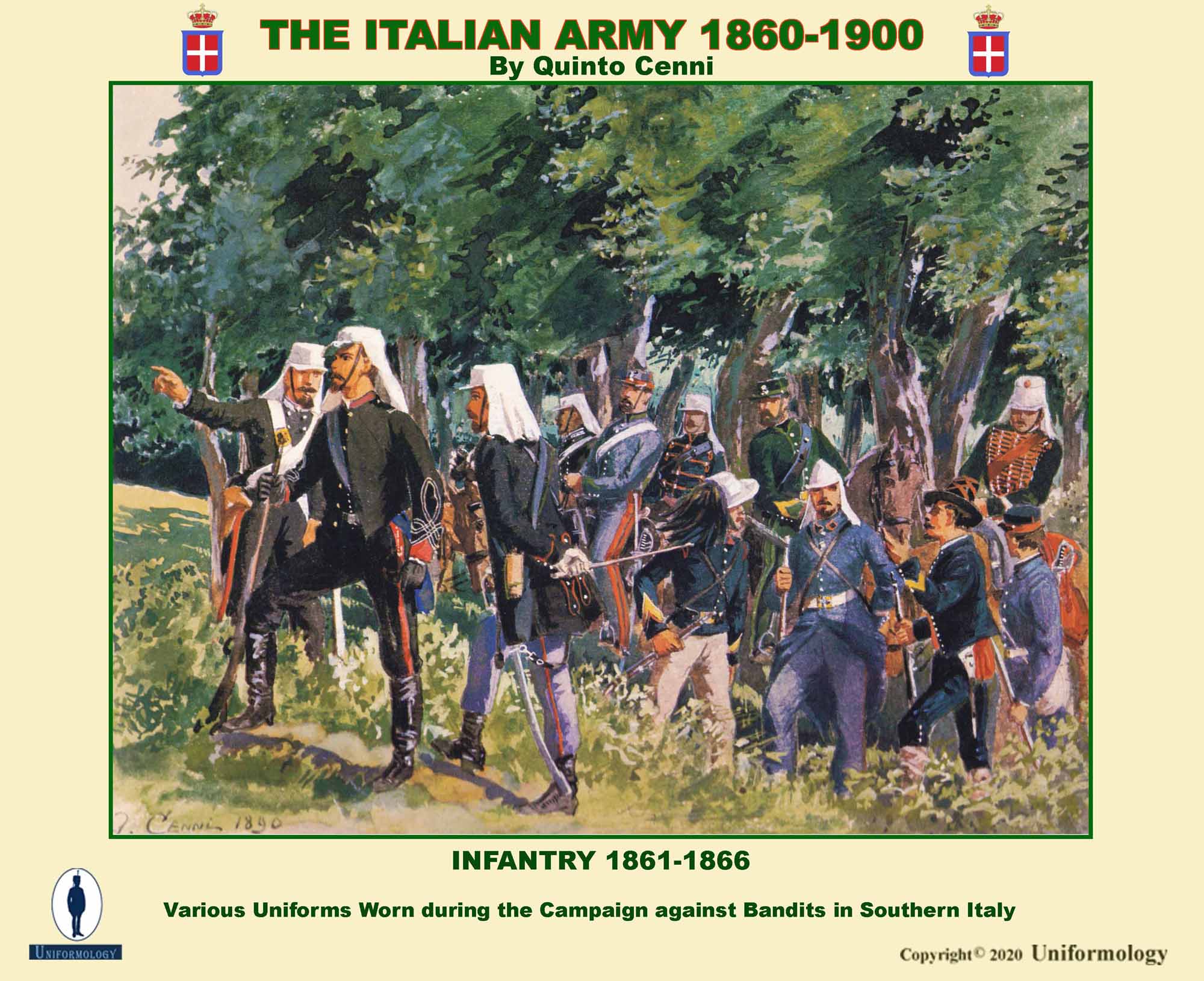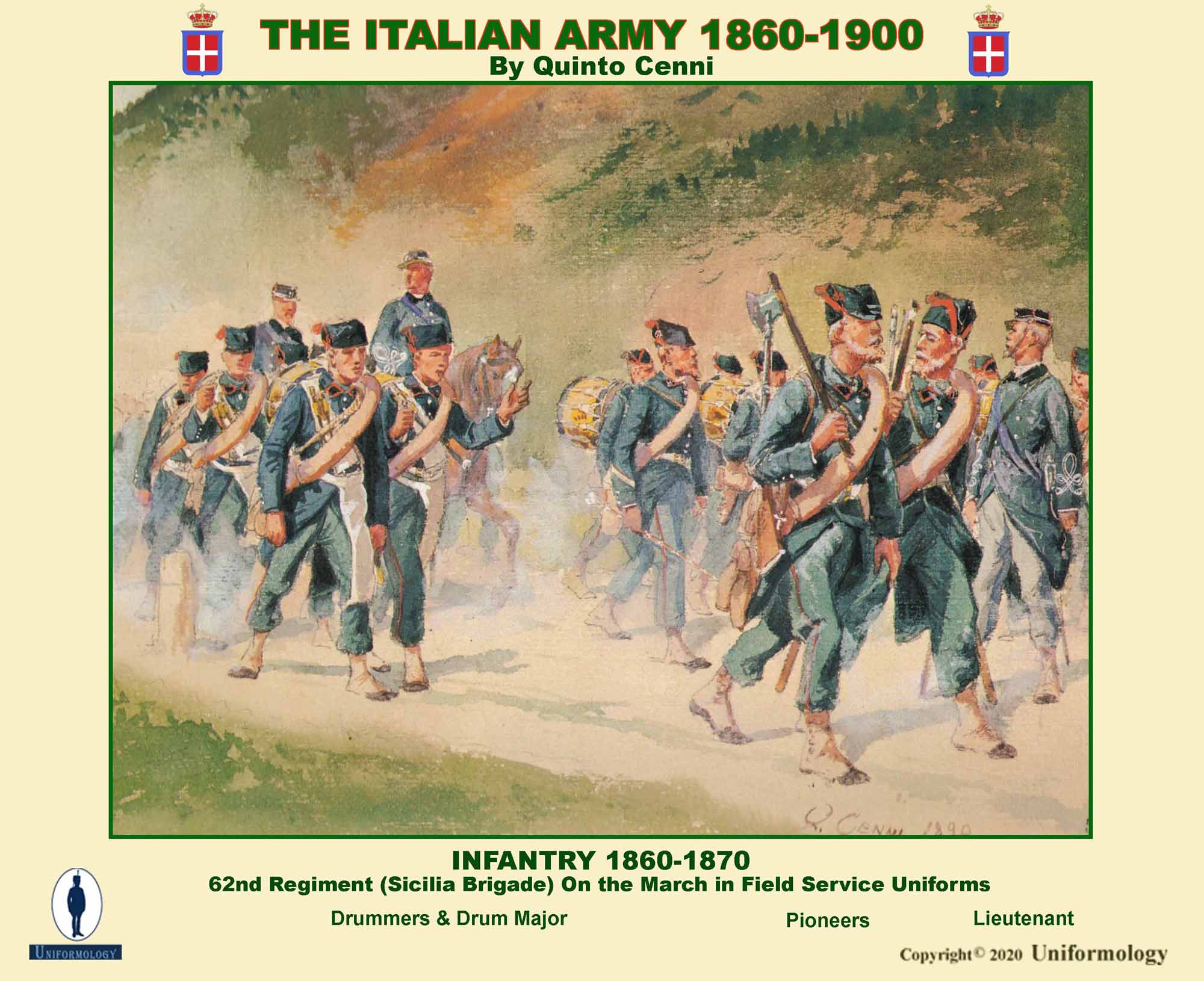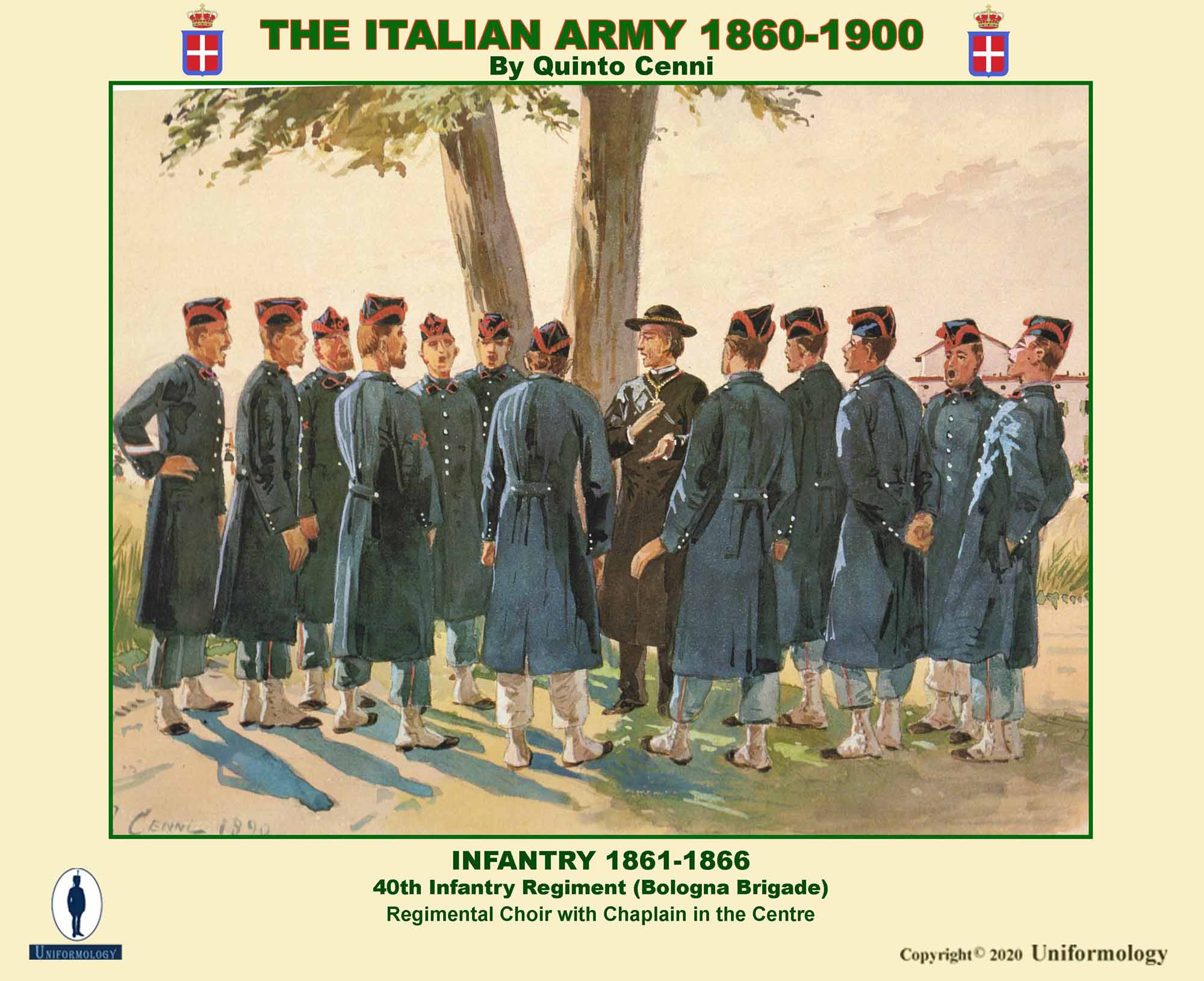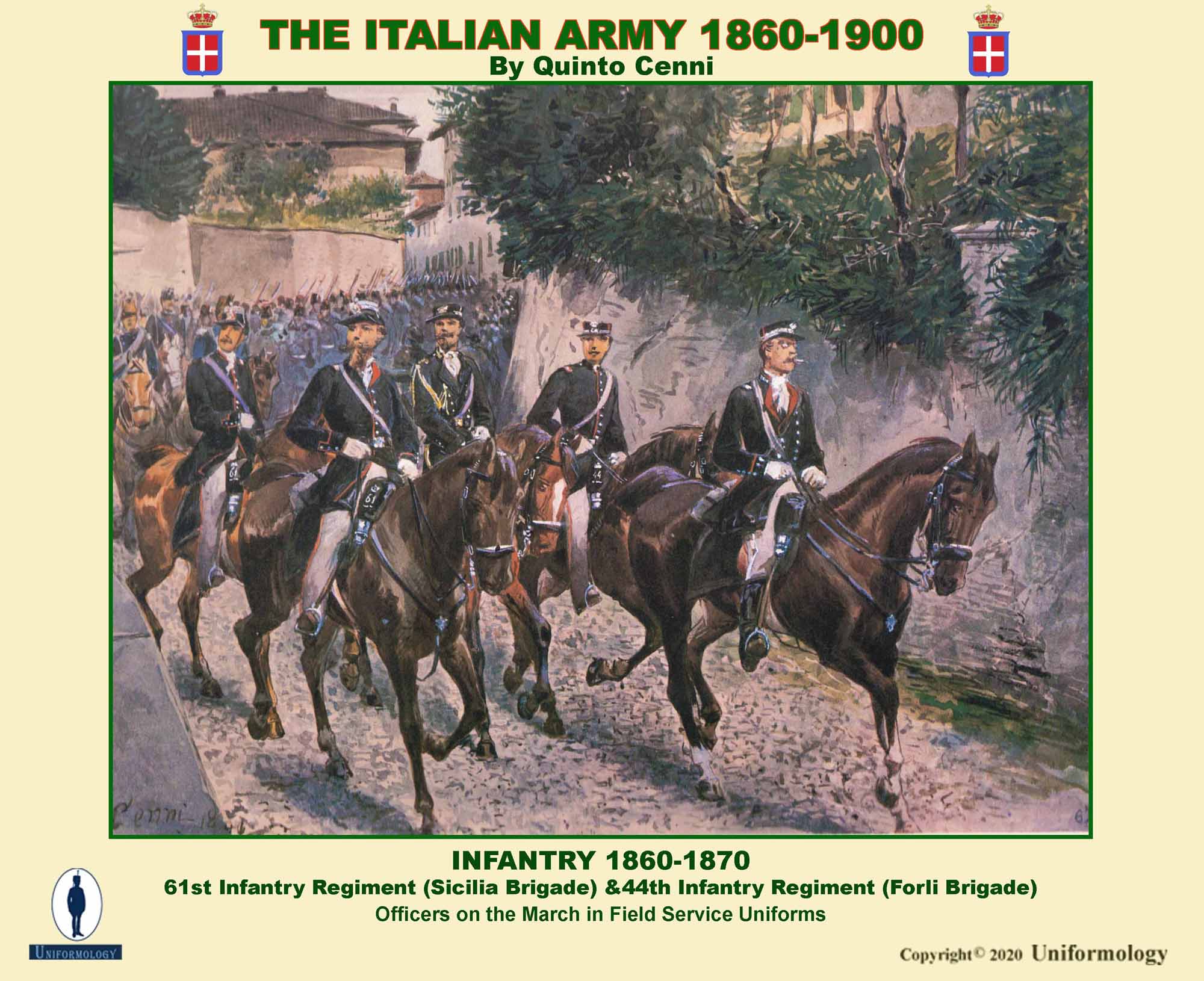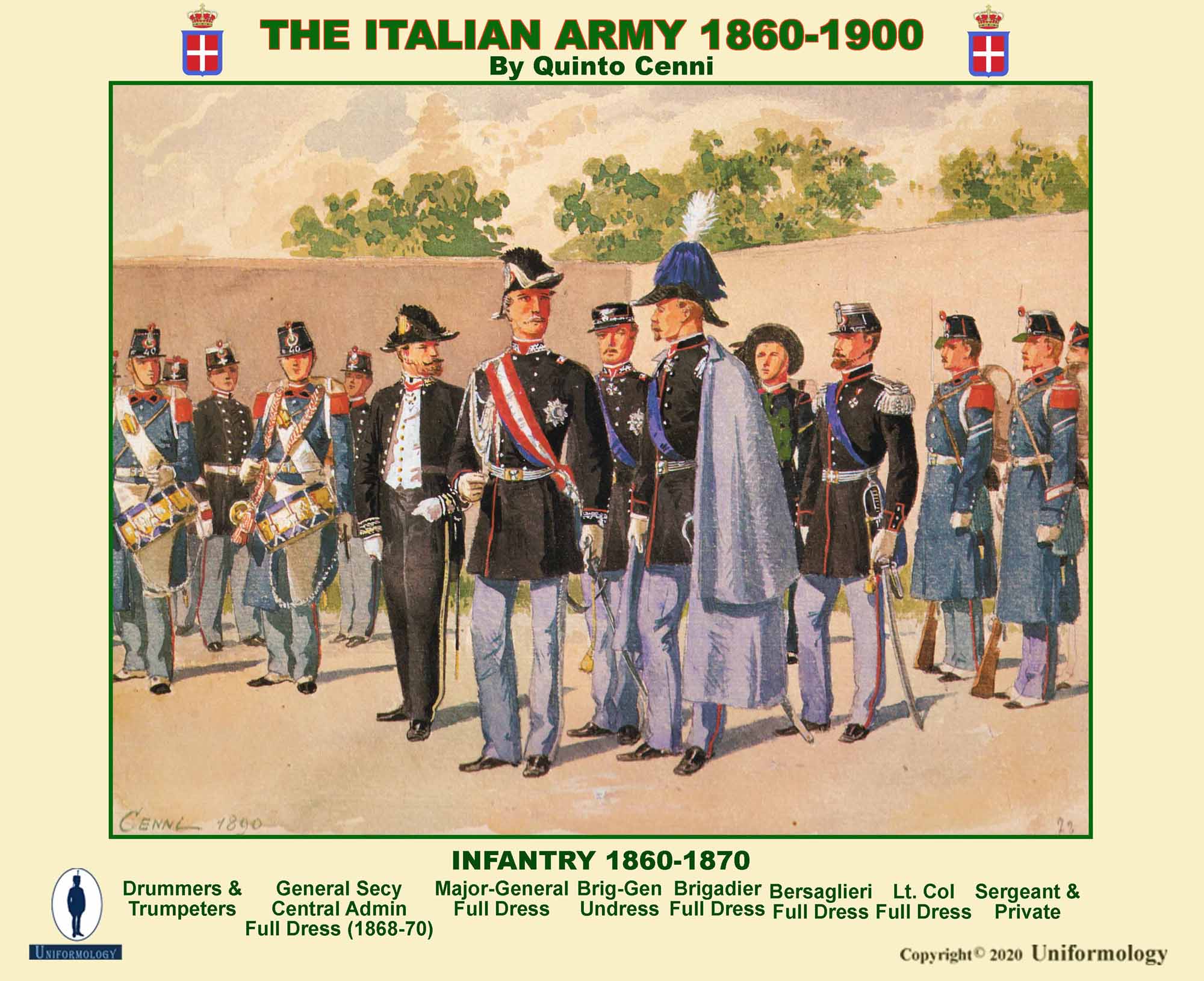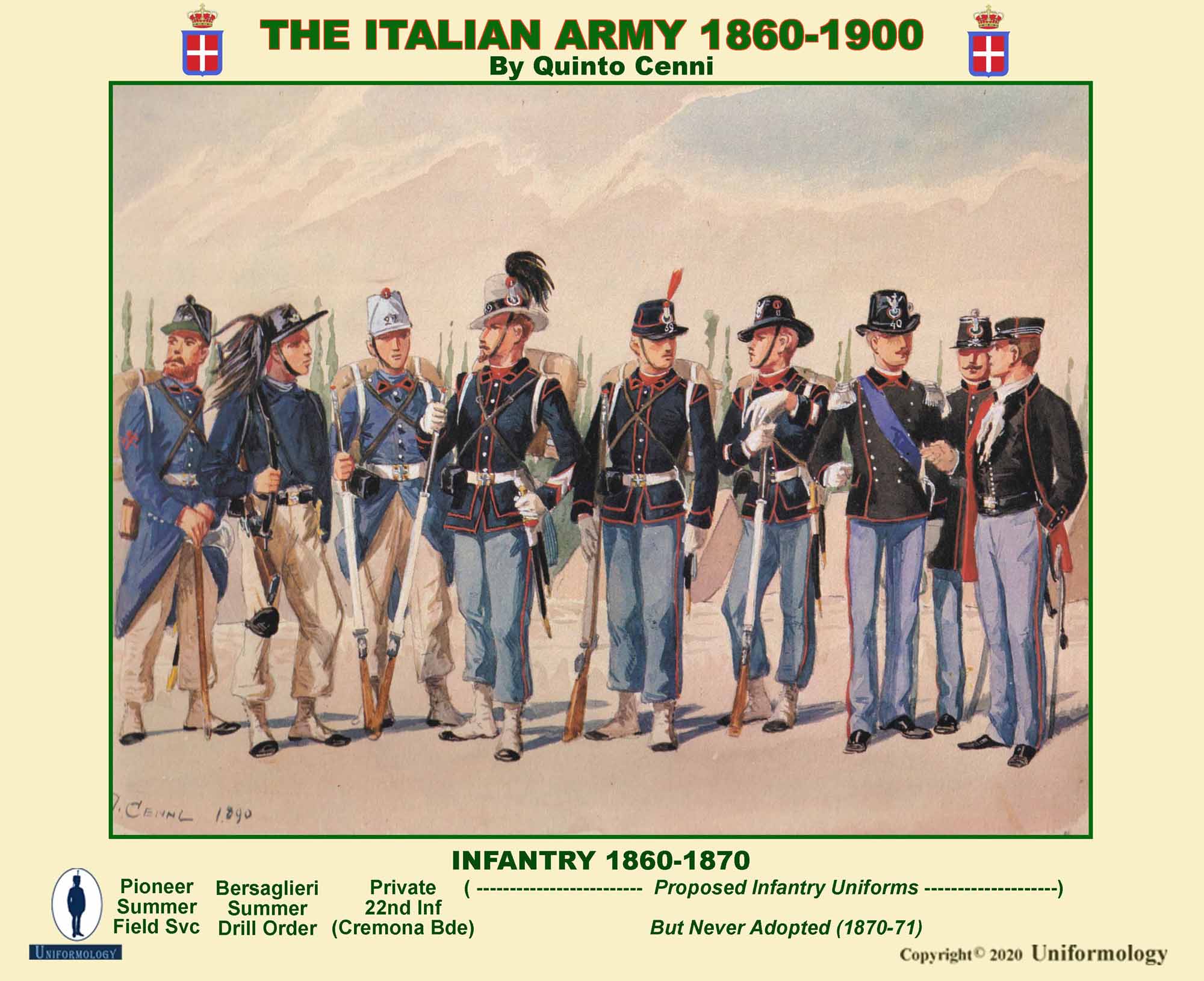THE WORLD OF MILITARY UNIFORMS
1660-1914
Page 1
ABOUT THE ARTIST
Quinto Cenni was probably one of the most prolific military artists of the nineteenth and early twentieth centuries. He was born in the city of Imola on 20th March 1845 and lost both of his parents by his 22nd birthday. He first studied new artistic technologies in Bologna and later in Milan where he became an engraver and lithographer producing artwork for magazines and other publications. In 1887 he became interested in military subjects when he became editor of L'Illustrazione Militare Italian and from that time onward immersed himself in the study of military uniforms. Before his death in August 1917, he had produced dozens of albums of Italian military uniforms and thousands of individual prints.
THE ITALIAN ARMY OF 1860-1900
With its roots in the upheavals of the Napoleonic Wars, Italy’s long struggle for unification (The Risorgimento) came close to fruition after Sardinia and France under Napoleon III defeated Austria at the battle of Solferino on 24th June, 1859. A few months later, the Neapolitan Army was defeated at Gaeta leaving only a portion of the Papal States, with Rome as its capital and Venetia left out. Despite this, on 17th March 1861, the Kingdom of Italy under Victor Emmanuel was proclaimed. In 1866, Italy allied itself with Prussia against Austria with unfortunate results. On June 24th 1866, the Italian Army was defeated by Austria at Custozza on the Mincio River. One month later her fleet was destroyed at Lissa in the Adriatic. Notwithstanding these calamities, Italy became fortunate that the decisive July 3rd victory of Prussia over Austria at Königgratz in Bohemia, left the Austrian Emperor too weak to make any demands on the Italian peninsula. Thus Venetia was united with the Kingdom of Italy. It would be nearly five years before Rome would become the capital of Italy as a result of Napoleon III’s defeat in the Franco-Prussian War.
It was probably natural that the uniforms and structure of the Army of the Kingdom of Italy would be based on those of Sardinia. The infantry were organized in brigades of two regiments each. At the time of unification, there was one Grenadier and 32 Infantry Brigades named after the various regions of the country. The full dress blue cloth kepi was of the 1859 pattern, which had changed little from the 1852 pattern. There was a national cockade on the front and a silver loop with silver bullion rosette above. The number of the regiment was in silver on the front of the patent black leather band above the peak. Officers wore dark blue tunics with black collar and cuff patches with red piping around the collar, down the front and edging the cuffs and scalloped cuff patches. The trousers were grey-blue piped red and a medium blue sash was worn over the right shoulder. Other ranks, like soldiers in the French and Austrian armies, wore the great coat in full dress and did not wear a tunic. It was more economical and durable under campaign conditions. White gaiters were also worn.
The Uniforms of other branches will be described in the appropriate sections.
THE ITALIAN ARMY 1860-1900
NEXT: INFANTRY 1870-1898
PART 1 1860-1900


